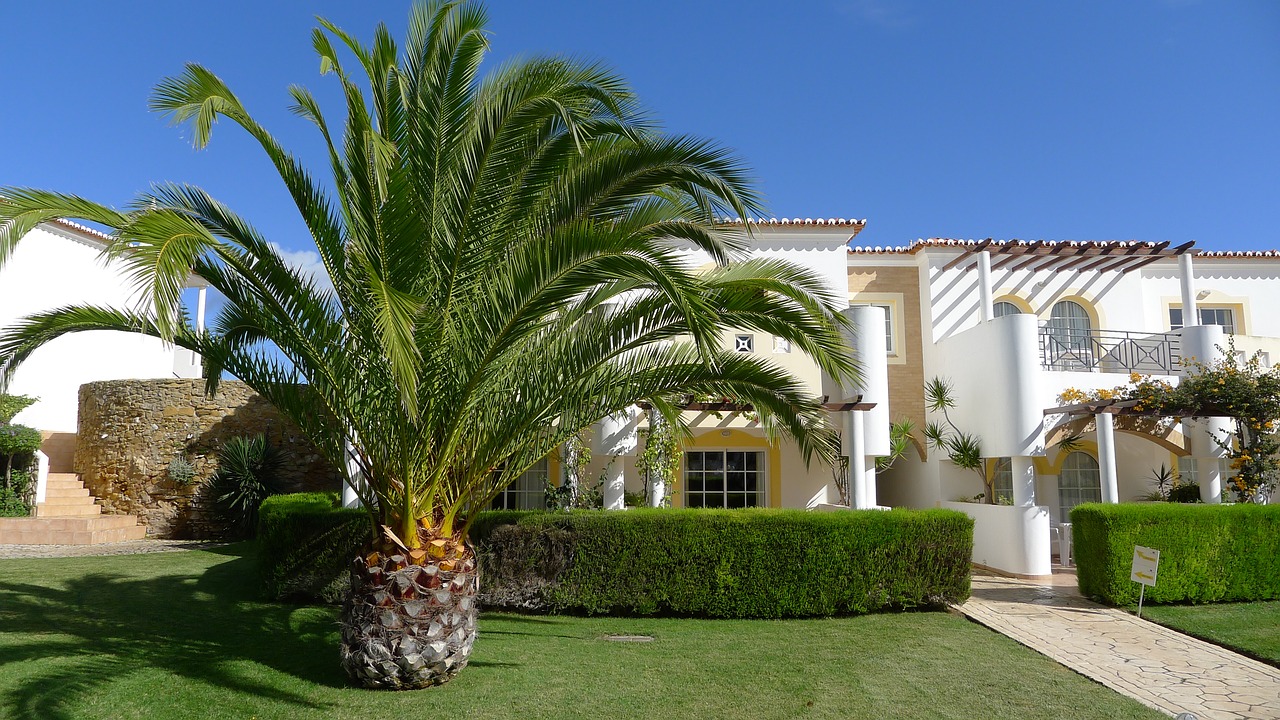
Orlando’s hot and humid Central Florida climate can seem like a curse in the summer, but it’s perfect for growing beautiful palm trees.
Why not take advantage of Orlando’s weather and plant some palm trees as part of your landscaping? With more than 2,500 species of palm trees, your design options are nearly limitless.
Here are five ways to include palm trees in your landscape with a couple of ways first to choose the palm trees that are perfect for what you have in mind to improve your yard or property.
How to Choose Palm Trees for Your Orlando Landscape
No one can deny that Orlando is hot, but it’s not quite as hot as it could be. In the winter, temperatures can regularly reach the 30s. That makes growing palm trees a little complicated.
Especially if you live in the northern part of Orlando, select cold-hardy palm tree varieties for your landscaping. This will ensure that your palm survives the winter and grows to its fullest potential. Date palms are usually best for Central Florida.
Some of the less hardy species of palms can survive in Orlando with careful attention from the gardener, but they typically won’t reach their full potential in height or appearance. These palms can and will grow, but they’ll probably be much smaller than their siblings in Florida’s more southern cities, such as Miami.
Once you’ve chosen the perfect palm for you, what should you do with it? How can you fit it into your landscape? We’ve got some suggestions.
1. Use a small palm tree to anchor a shrub or flower bed
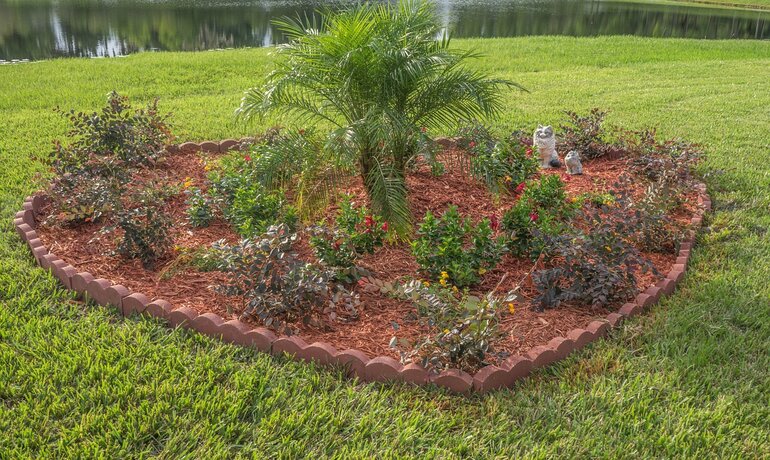
Add a touch of flair to your run-of-the-mill plant bed with a smaller palm. You could choose a slow grower or a dwarf variety for this design. The palm’s cascading fronds make a perfect centerpiece. Palms with feathery fronds (like the one pictured) suit this layout especially well.
Since most palms of this size are a plain green, use the surrounding plants to create a backdrop of different colors. Use mulch and a border to tie the whole thing together.
Types of palms that would work well for this look:
- Cat palm (Chamaedorea cataractarum)
- Majesty palm (Ravenea rivularis)
- Bamboo palm (Chamaedorea seifrizii)
- Butterfly palm, aka areca palm (Dypsis lutescens)
2. Plant a cluster of palm trees as a standalone feature
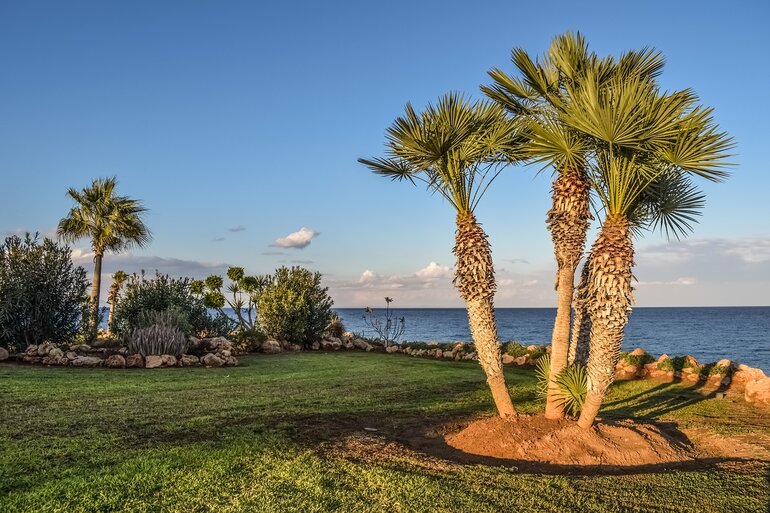
For this statement piece, you can plant a handful of single-trunk palm trees together in one bed or use a multi-trunk specimen. Though a cluster of palm trees is simple, it’s a nearly effortless way to give your landscape a tropical feel.
Surround your palm trees with shrubs, ornamental grasses, or a border to make them more cohesive with your existing landscape design.
Types of palms that would work well for this look:
- Mediterranean fan palm (Chamaerops humilis)
- Sugar cane palm (Dypsis baronii)
- Senegal date palm (Phoenix reclinata)
- Christmas palm (Adonidia merrillii)
3. Frame an important feature with a double row of palms
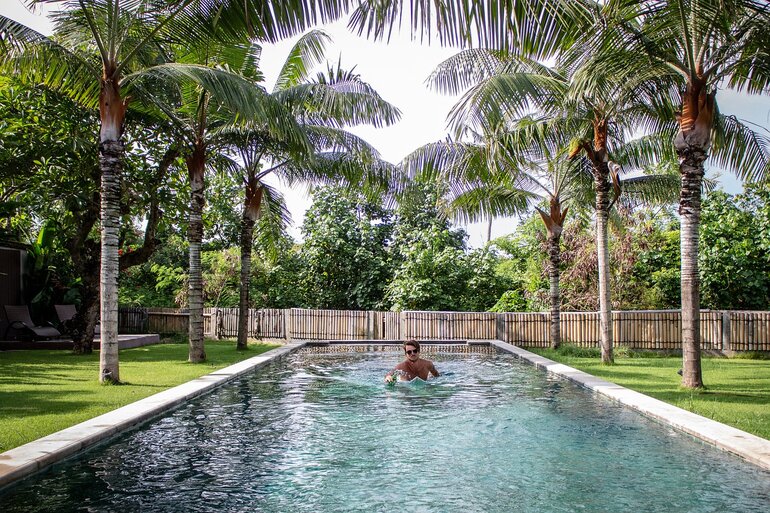
You’ve probably seen the iconic double row of palm trees lining Hollywood Boulevard, so you already know how this simple layout can elevate the drama of a landscape. In your yard, you can use it to accentuate an important feature, such as a swimming pool, driveway, or outdoor living space.
For this design, you’ll want to use tall palms. The taller the trees, the more dramatic and important your landscape will look.
Types of palms that would work well for this look:
- Sabal palm (Sabal palmetto)
- Canary Island date palm (Phoenix canariensis)
- Coconut palm (Cocos nucifera)
- Sylvester palm (Phoenix sylvestris)
4. Create a tropical look with potted palm trees
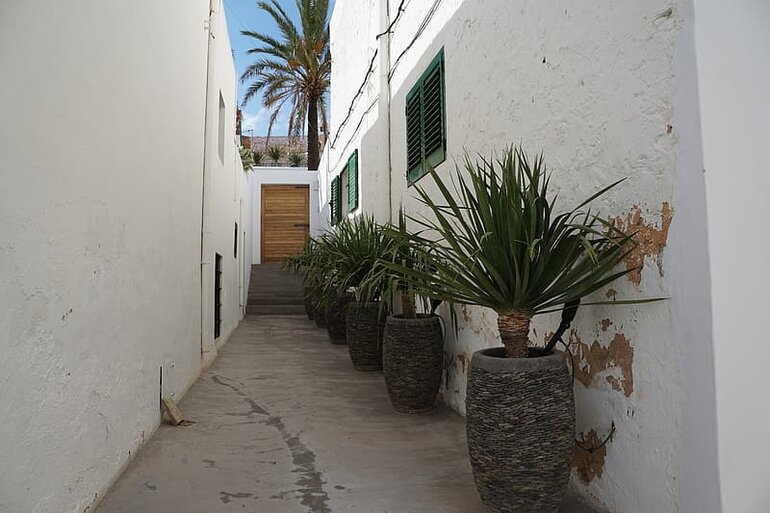
If you live in downtown Orlando, you probably don’t have much in the way of a yard, but that doesn’t mean you can’t have your own palm tree-centric landscape. Several species of palms are small enough to grow in a pot. You can arrange them on your doorstep, in an alley, or even on your rooftop, since most palms enjoy full sun.
Potted palms can be helpful outside of urban areas, too. If temperatures drop severely in the winter, as they sometimes do in Central Florida, you’ll be able to move your potted palms indoors (you may need a little help moving those potted palms) to protect them from freezing.
For this reason, a landscape featuring potted palms is an especially good idea for those living in Orlando’s northernmost reaches.
Types of palms that would work well for this look:
- Pygmy date palm (Phoenix roebelenii)
- Dwarf palmetto (Sabal minor)
- Lady palm (Rhapis excelsa)
- Silver European fan palm (Chamaerops humilis cerifera)
5. Use palm trees as an unexpected pop of color
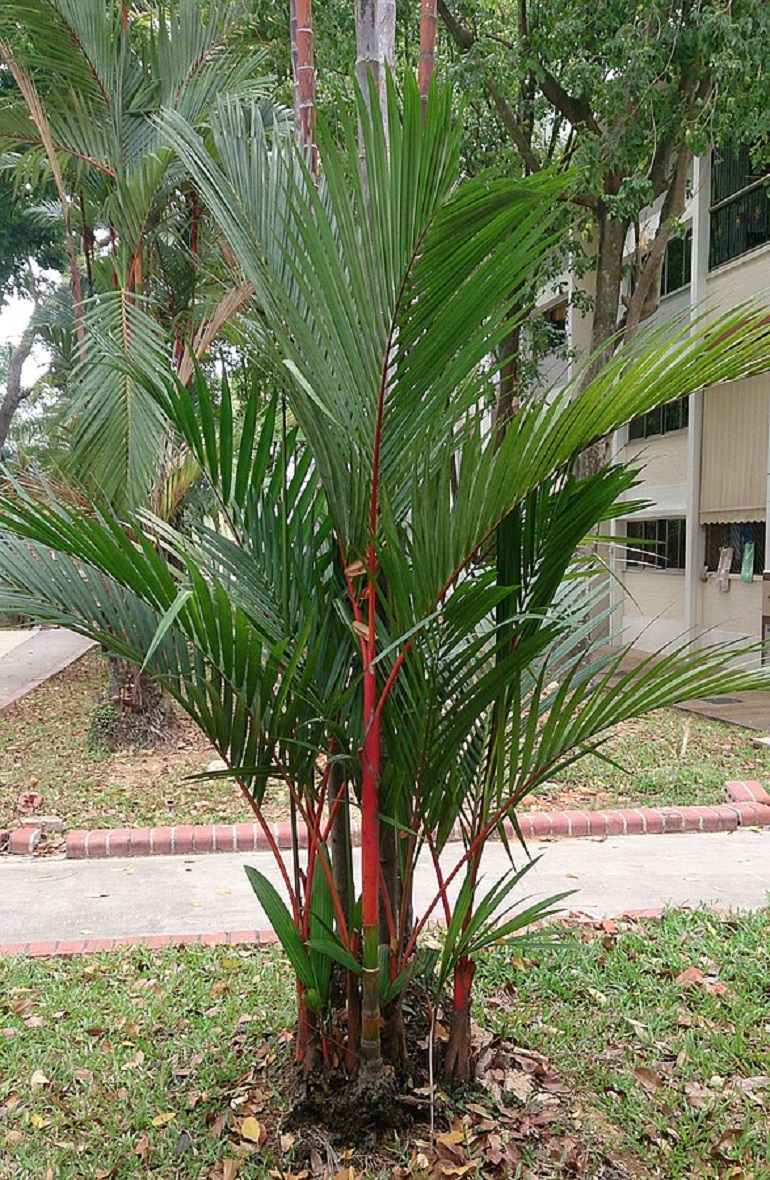
Usually, when you think “palm tree,” you envision a sea of green. But there are several species with striking reds, blues, yellows, and a whole rainbow besides. Some have colored stems, some sprout bundles of vibrant flowers, and others have fronds in interesting shades.
Using colorful palm trees will give your landscape an exotic touch. While your neighbors all use the ordinary green species, your yard will stand out with vivid dashes of color mixed in.
For an even bolder approach, you can mix and match several odd-colored palms in your landscape.
Types of palms that would work well for this look:
- Lipstick palm (Cyrtostachys renda)
- Flame thrower palm (Chambeyronia macrocarpa)
- Mexican blue palm (Brahea armata)
- Windmill palm (Trachycarpus fortunei)
FAQ about landscaping with palm trees
What do you put around palm trees?
Palm trees are beautiful, yes, but one tree does not a landscape make. You’ll want to surround your palms with mulch and/or other plants to create a complete picture. You should never just stick a palm tree in plain grass; always use a plant bed.
Since most palm trees aren’t very colorful on their own, you’ll want to choose surrounding plants with diversely colored blooms and leaves. Some native Orlando plants that pair well with palm trees include:
- Crotons (Codiaeum variegatum)
- Pink muhly grass (Muhlenbergia capillaris)
- Scarlet hibiscus (Hibiscus coccineus)
- Firebush (Hamelia patens)
How much room does a palm tree need?
How much space your palm tree needs to grow and stay healthy depends on what variety you choose.
Just keep in mind the average height, trunk diameter, and crown diameter of the palm species you’re planting. This information will determine how much space you should leave between the tree and other plants or structures.
Because of palm trees’ shallow roots, it’s typically safe to plant them near your house or driveway. If you’re planting a large species, though, you should leave a few feet of distance to prevent future damage.
How much do palm trees cost in Florida?
Pricing also depends heavily on what species of palm tree you want to purchase. The smallest (and therefore cheapest) varieties like cat palms, majesty palms, and coontie palms typically range from about $20-$40.
The maturity of your palm determines price, too. If you plant a fledgling tree that’s only 1-3 feet tall, you’ll save money. On the other hand, if you want a mature tree that’s already 6 feet or taller, you’re looking at a price tag of around $150-$350.
When to Hire a Professional Landscaper
If you’ve never transplanted a tree before, calling a professional landscaper to plant your palm trees might be a good idea. Palm trees can be quite expensive (especially fully grown ones). You don’t want to waste money on a tree that’s going to die in a few months because you made a mistake when planting the roots.
You might also enlist professional help in taking care of your palm trees if you choose a particularly high-maintenance variety. Most palm trees should be fairly easy to maintain on your own, however, since several species are drought-tolerant and self-pruning.
Forget about the beach, the amusement parks, and all the other tourist traps of Central Florida. The tropical paradise in your own yard is about to be Orlando’s newest attraction. Armed with these tips — and hopefully a little creative inspiration — you’re ready to start landscaping with palm trees.
Main Image Credit: Needpix